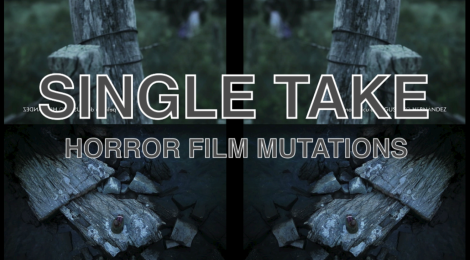
Transnational Film Remakes: LA CASA MUDA and SILENT HOUSE
Today, Mediático presents an entry by one of its co-editors Catherine Grant, Senior Lecturer in Film Studies at the University of Sussex. It consists of a videographic film study she made to accompany a presentation she gave on the 2010 Uruguayan film La casa muda/The Silent House, directed by Gustavo Hernández and its U.S. remake Silent House, directed by Chris Kentis/Laura Lau in 2011, at a recent Society for Cinema and Media Studies 2014 conference panel on Transnational Film Remakes.
Single Take Horror Film Mutations by Catherine Grant
Presentation Abstract:
Low budget horror filmmakers have, on occasion, achieved international prominence for their films through their creative use of “extreme realist” production gimmicks. The found footage and POV photography conceits of Cannibal Holocaust (Deodato, Italy, 1980), The Blair Witch Project (Sánchez/Myrick, U.S.A., 1999), [REC] (Balagueró/Plaza, Spain, 2007), its American remake Quarantine (Dowdle, 2008), and Paranormal Activity (Peli, U.S.A., 2007) not only generated actual production constraints which helped to forge spectatorially appealing levels of cinematic intensity, as well as novel film marketing hooks. They also proved to be highly translatable, apt for transnational remaking, seriality and recirculation as part of what Hunt and Leung have called the “mutating currencies of transnationality.” (Leon Hunt and Leung Wing-Fai (eds.), East Asian Cinemas: Exploring Transnational Connections on Film [London: I.B. Tauris, 2008]: 5).
My presentation will think through some aspects of the transnational translatability of the low-budget, production gimmick horror-film by exploring a recent, sub-generic instance of it: the faux “single take” horror La casa muda (Hernández, Uruguay, 2010) and its U.S. remake Silent House (Kentis/Lau, 2011). The Uruguayan film (“based on a true story”) achieved international salience by successfully translating the unusual production, “twist narrative” and marketing techniques of earlier U.S. films such as Rope (Hitchcock, 1948), and The Circle (Zeltser, 2005), in its take on the “uncanny house” story, an important South American (as well as transnational) “foundational fiction” (Sommer, 1991). How did this high-concept film (tagline: “Miedo real en tiempo real”/“Real fear in real time”) come to be such a desirable property that a licensed U.S. remake was released within a year? And what are the consequences of such a rapid turnover.
Also see on La casa muda:
- David Martin-Jones and Maria Soledad Montañez, “What is the “Silent House”? Interpreting the international appeal of Tokio Films’ Uruguayan horror La casa muda/The Silent House (2010),” Forthcoming.
- Victoria Ruetalo, “” in Rosana Díaz and Patricia Tomé (eds), Horrofìlmico. Aproximaciones al cine de terror en Latinoamérica y el Caribe (2012)
Further reading on Uruguayan cinema:
- Martin-Jones, D., and Montanez, M.S. (2013) Personal museums of memory: the recovery of lost (national) histories in the Uruguayan Documentaries Al pie del árbol blanco and El círculo. Latin American Perspectives, 40 (1). pp. 73-87.
- Martin-Jones, D., and Montanez, M.S. (2013) Afterthoughts on auto-erasure. Cinema Journal, 53 (1). ISSN 0009-7101
- Martin-Jones, D., and Montanez, M.S. (2013) Uruguay disappears: small cinemas, control Z films, and the aesthetics and politics of auto-erasure. Cinema Journal, 53 (1). pp. 26-51. ISSN 0009-7101 (doi:10.1353/cj.2013.0064)
- Montanez, M.S., and Martin-Jones, D. (2012) (Des) localizando el cine Uruguayo/(Dis) locating Uruguayan cinema. 33 Cines, 1 (1). pp. 6-16.
- Martin-Jones, D., and Montanez, M.S. (2009) Cinema in progress: new Uruguayan cinema. Screen, 50 (3). pp. 334-344. ISSN 0036-9543 (doi:10.1093/screen/hjp015)
- Martin-Jones, D. (2007) Bicycle thieves, or thieves on bicycles? El Baño del Papa (2007). Studies in Hispanic Cinemas, 4 (3). pp. 183-198. ISSN 1478-0488






